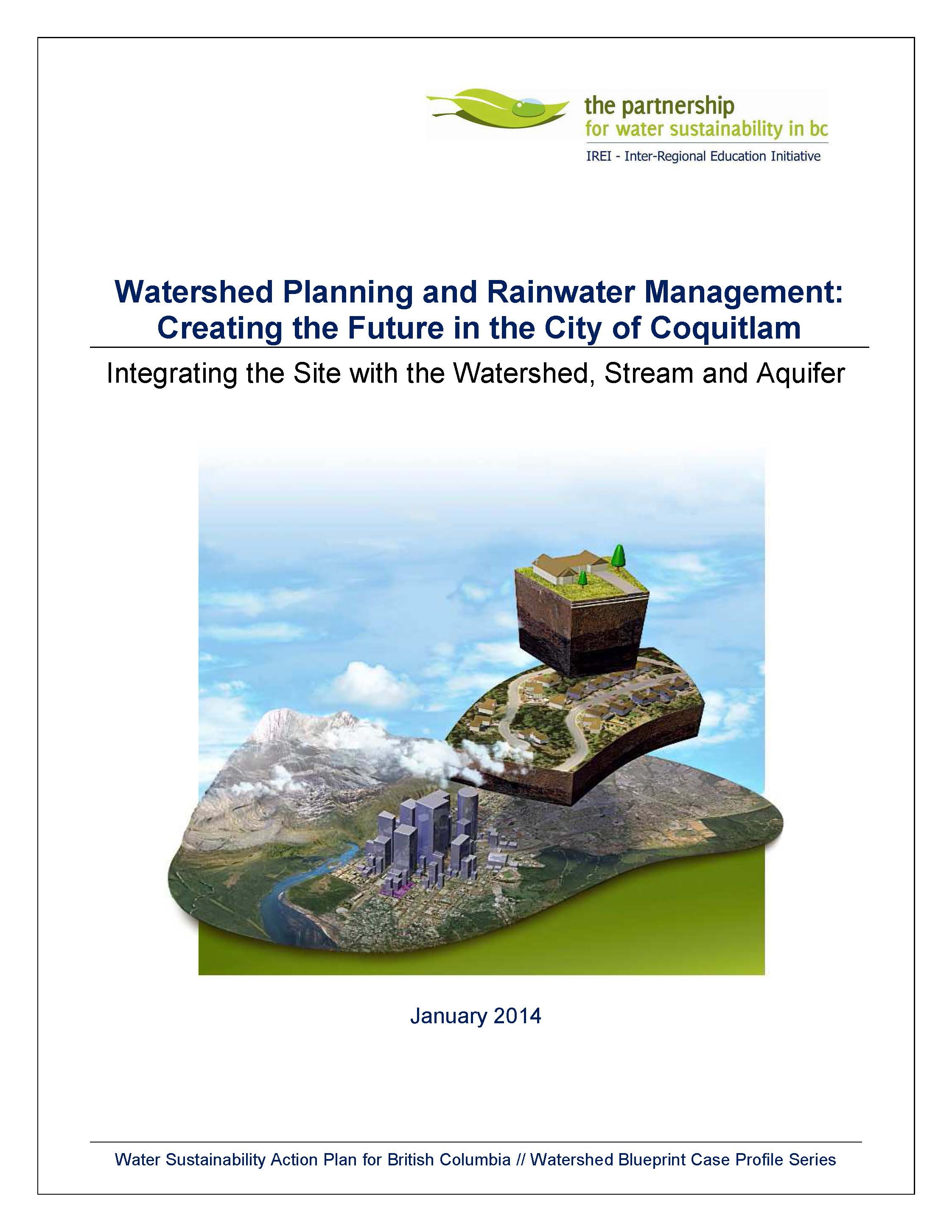Watershed Planning and Rainwater Management: Creating the Future in the City of Coquitlam
Note to Reader:
The “Coquitlam story” is the second in a series of Watershed Blueprint Case Profiles published by the Partnership for Water Sustainability. Co-authored by Melony Burton and Kim Stephens, the Case Profile describes how the City of Coquitlam has evolved an effective and adaptable approach to watershed-based community planning.
To download a copy, click on Watershed Planning & Rainwater Management: Creating the Future in the City of Coquitlam.
From Awareness to Action in the City of Coquitlam
“Experience shows that bridging the gap between awareness and action in local government requires that three critical success factors be in alignment: organizational and political commitment; internal champions who provide energy and leadership and  stimulate willingness to change; and trust between individuals and departments,” observes Kim Stephens, Executive Director of the Partnership for Water Sustainability in British Columbia.
stimulate willingness to change; and trust between individuals and departments,” observes Kim Stephens, Executive Director of the Partnership for Water Sustainability in British Columbia.
“Over a long period of time, and in fact dating back to the mid-1990s, all three factors have been in play in the City of Coquitlam.”
Develop Outcome-Oriented Plans
“The Coquitlam experience demonstrates that four Ingredients will be in the mix when local governments undertake to develop outcome-oriented plans,” continues Kim Stephens. “The participants in the process will have to collaborate to:
- Define the problem;
- Declare the community’s values;
- Select and apply the right tools; and
- Wrestle with the solutions.”
“The goal of the Partnership in producing Watershed Blueprint Case Profiles is to facilitate inter-regional collaboration, such that sharing and cross-fertilization of experience and understanding helps all local governments go farther, more efficiently and effectively.
“By telling the stories of those who are spearheading changes in practice, this helps other local governments eliminate the ‘disconnect between information and implementation’ that may otherwise hold them back.”
To Learn More:
The Table of Contents presents a section-by-section synopsis of the Coquitlam storyline and is written for the busy reader. The storyline is structured in three parts that address What (Part A), So What (Part B) and Now What (Part C).
To download a copy of the Watershed Case Profile, click on Watershed Planning & Rainwater Management: Creating the Future in the City of Coquitlam.
To read a set of stories posted elsewhere on this Convening for Action community-of-interest, click on this link to City of Coquitlam champions.



